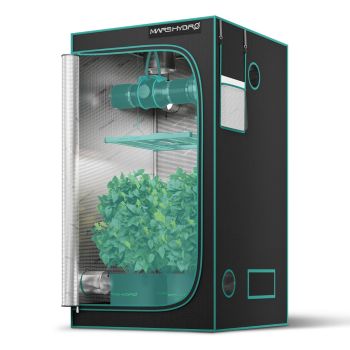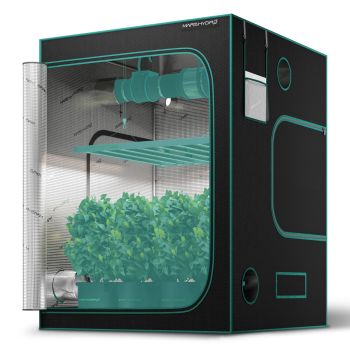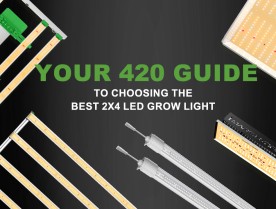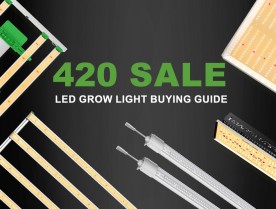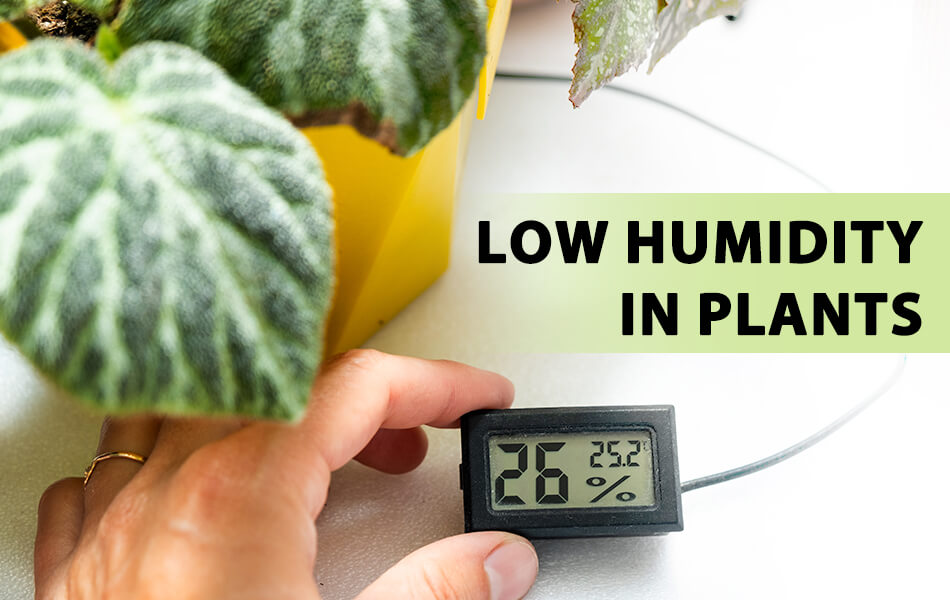
Humidity plays a critical role in plant growth. With winter just around the corner, many growers must prepare not only for dropping temperatures, but also for low humidity conditions. When humidity is lacking, plants can develop a variety of symptoms and fail to grow healthily. In this blog, we'll cover the symptoms of low humidity in plants, and ways to increase humidity to help you cultivate better.
The Symptoms That Indicate Low Humidity In Plants

Symptoms of low humidity are similar to low soil moisture or excessive light conditions. The leaves of some plants start to curl downward or inward, then turn brown and crisp, and eventually you get wilted and dried leaves and flowers.
But as we mentioned, these symptoms are similar to those caused by low soil moisture and too much light. So how do we distinguish the low moisture symptoms from them?
Quite simply, compared to the soil, the plant's leaves suck their moisture directly from the air, so when the air is not humid enough, the symptoms are often the first to show up on the leaves. When plant leaves begin to discolor and dry out from the edges or tips, then it’s probably facing the low humidity issue. Besides, the leaves of some plants that face the low humidity issue will curl downward or inward, while the leaves of the plants that are in low soil moisture issue will curl upward. This is also a very big difference.
Also, the symptoms of excess light are yellowing, brittle leaves, etc., but unlike low humidity, the symptoms of excess light begin first on the leaves closest to the light source and not specifically along the leaf edges.
Understand Humidity Before You Get Down To The Plant Issue
Since my plants lack moisture, will watering my plants thoroughly solve the low humidity problem? Apparently not. In terms of the symptoms and the differences between low humidity issue and low soil moisture issue, it's not the moisture in the soil or medium that you want to address for your indoor plants, it's the moisture in the air.

What Is Low Humidity In Plants?
Humidity, or so-called “Relative Humidity”, is the concentration of water vapor present in the air - the ratio of how much water vapor is in the air and how much water vapor the air could potentially contain at a given temperature. If the relative humidity is 60% at 80 degrees Fahrenheit, the air contains 60% of the maximum amount of water it can hold at that temperature.
Relative humidity depends on the temperature and pressure of the system of interest. For example, usually cool air can carry less water vapor than warm air. That means the same amount of water vapor results in higher relative humidity in cool air than in warm air.
Identify The Humidity Level Is The First Step To Fixing The Low Humidity Issue
To solve the low humidity problem, growers need to know how much water vapor is in the grow room now and what the optimal humidity level is for their indoor plants.
To identify the humidity level for your plants, just remember that a hygrometer is so much better than your skin and guesswork.
Most indoor plants thrive at a 40% - 60% humidity level, some are even accustomed to a humidity level of up to 90%.
If you’re growing plants not just for fun, but for commercial use or aiming for production, it is vital that your plants have an always optimal humidity level to live in, because, at each different stage of growth from seed to harvest, plants grow fastest at different temperatures and so at different humidity levels. For example, theoptimal humidity level for cannabis plants are 65% - 75% at seedling stage, 50% - 60% at vegetative stage, and 35% - 45% at flowering stage.
More importantly, VPD (Vapor Pressure Deficiency) is what prospective commercial growers really need to watch out for. The significance of controlling your humidity level according to the VPD is that you can better understand the health of your plants in relation to other standard grow room metrics, thus achieving not only the best humidity for your plants but also the best temperature and the best ventilation frequency, etc. We have introduced about the effect of VPD on plants and how to leverage this metric in an indoor growing system in ourprevious blog. Check it out if you're interested.
How To Fix Low Humidity Issue In Plants

Use a humidifier. Investing in a humidifier is the easiest and fastest way to increase the relative humidity level of your plants. Humidifiers with timer functions or environmental sensors usually know better than the plants themselves when they need some more moisture. The only problems are it’s a cost and it will increase the humidity level of an entire room which would make the room too humid for humans to live in. If you are growing indoor plants in an enclosed grow room or grow tent, a humidifier will keep your plants safe from humidity deficiencies and get healthy and fast growth.
Use a plant water tray. Setting your grow pots above a water tray would immediately increase the humidity level around your plants. When using this method, it is necessary to avoid direct contact between the pot and water(e.g.add pebbles in between), and to regularly renew the water. This is to avoid your water tray becoming a petri dish for microorganisms and bugs.
Mist your plants. Keep a spray bottle filled with fresh water near your planting area and spray the plants every so often. It’s a simple and cheap way to increase the humidity level, though not so accurate. Misting indoor plants at the beginning of winter can be very effective because as the temperature drops rapidly, the relative humidity drops simultaneously.
Arrange a “greenhouse”. The “greenhouse” in indoor growing is more like a big humidity dome or any enclose growing environment. Agrow tent with grow lighting and ventilation can build an individual space for your plants indoors and help form half of the water cycle - water evaporates from the soil and transpires from the plant leaves into the air and is locked inside the canopy by the tent, which in turn raises the humidity level. You get more benefits from agrow tent if you’re running a hydroponic growing system because the water could be recycled by this means. A grow tent provides lots of benefits in indoor growing, especially in winter. Check out ourprevious blog if you have an interest.
To Round Up
Low humidity is a common problem in indoor plants growing with easy-to-identify symptoms. To invest in a humidifier, use a water tray, mist the plants, and create a “greenhouse” for your indoor plants will effectively increase the relative humidity and help form a stable and healthy growing environment.



